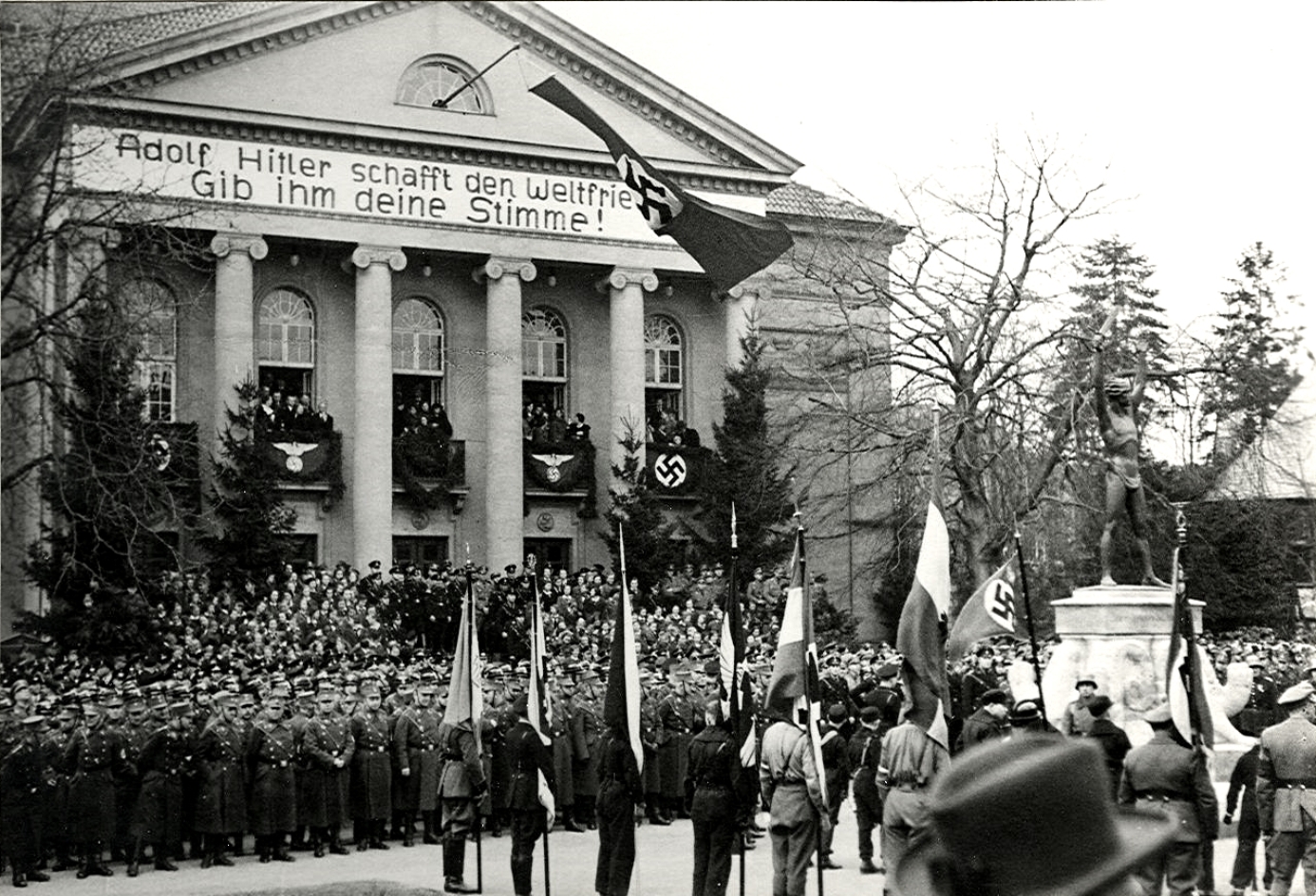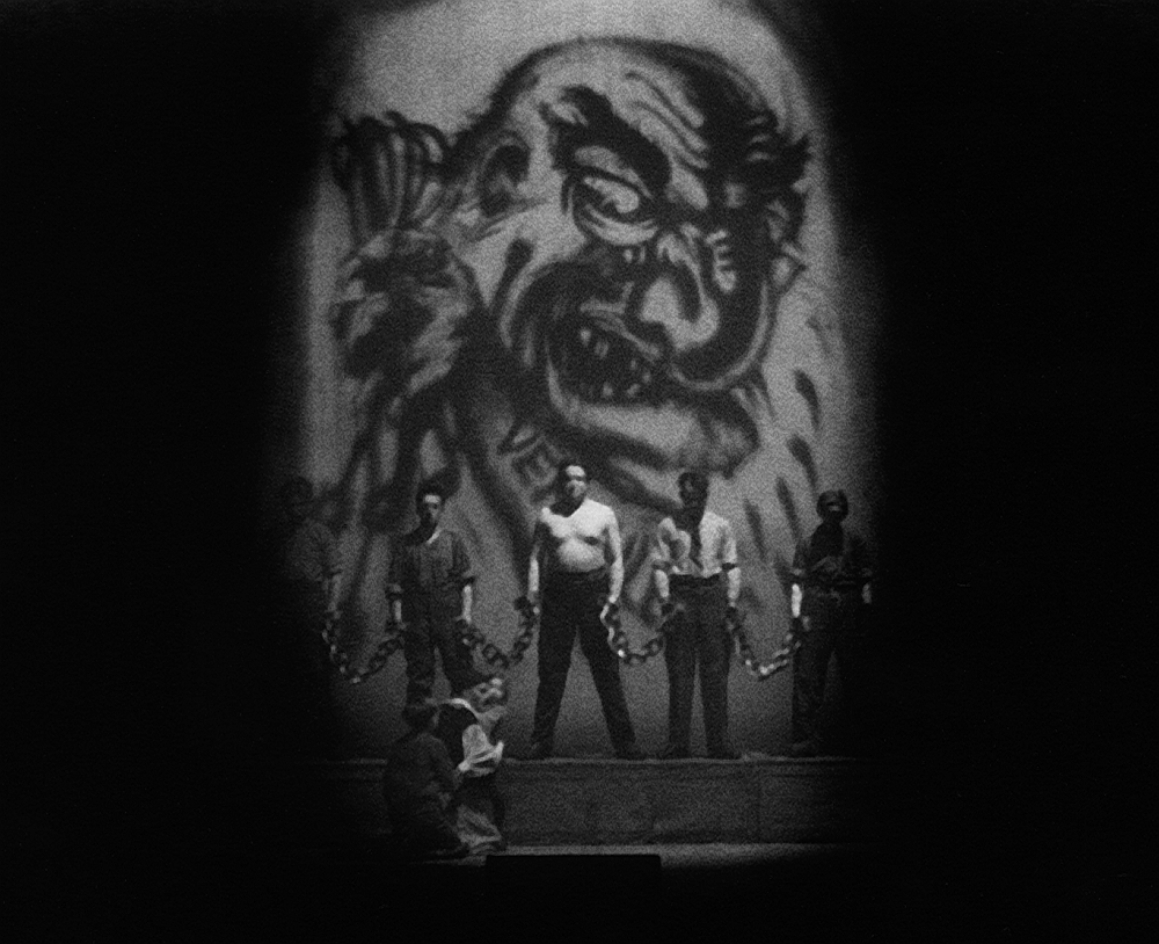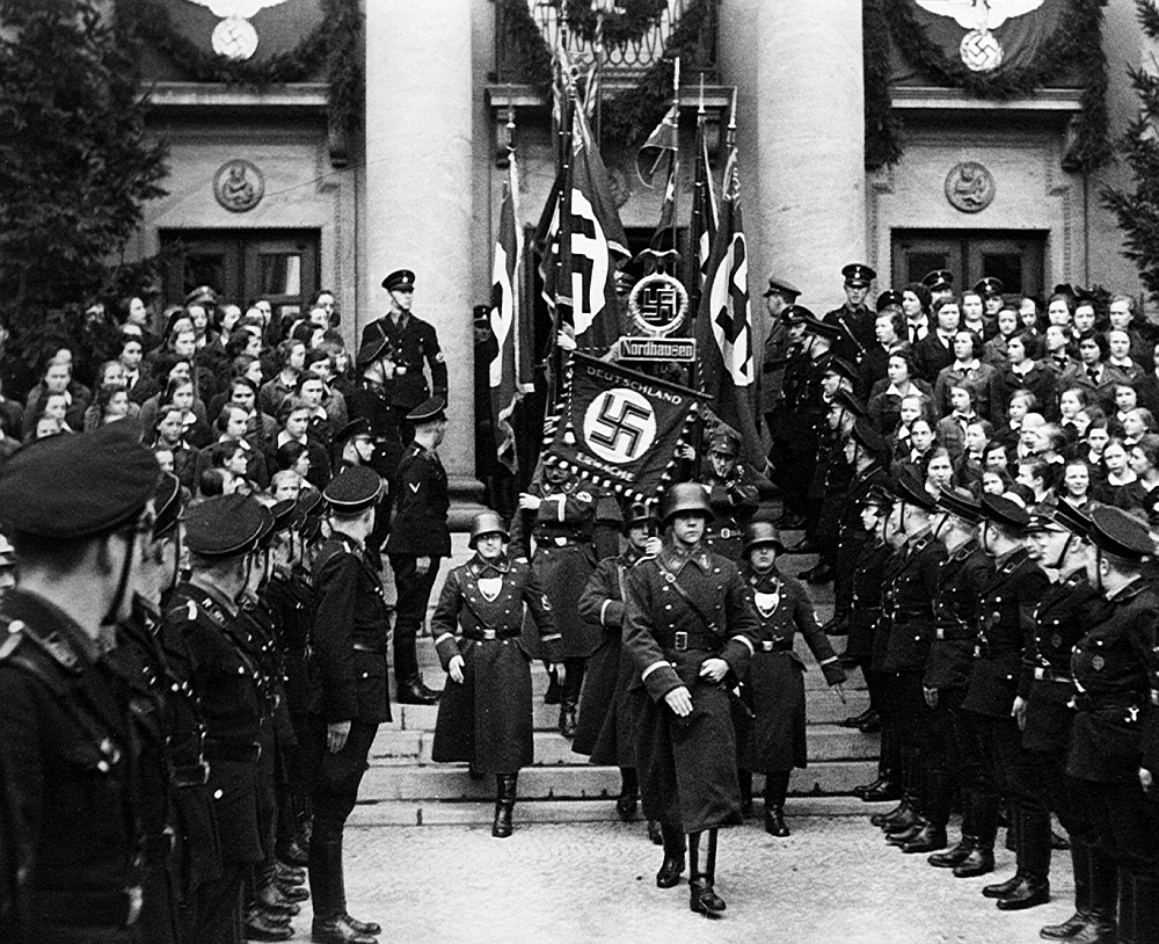


The Nordhausen theatre, which opened in 1917, was an expression of the city's self-confidence. Its friends and patrons were mainly the wealthy educated middle classes of the growing town in the southern Harz. After 1933, it became an instrument of National Socialist cultural policy.
At the beginning of the 1930s, theatres had a high cultural status throughout the German Reich and were a central entertainment medium alongside radio and cinema. The Nazi regime used this importance by turning theatres into major propaganda tools. The Reich Chamber of Culture, founded in 1933 by Reich Propaganda Minister Joseph Goebbels, aimed to regulate and control all cultural institutions and individuals. Politically unreliable or "non-Aryan" artists and actors were banned from practising their profession.
Cultural life in the city of Nordhausen also changed within a very short period of time as a result of the new Nazi art and cultural policy. In October 1933, the Nordhäuser Zeitung newspaper described the theatre as an "important contributor to the shaping of the German people". Three Jewish artists - the general music director and two singers - were forced to leave the municipal theatre; nothing is known about their fate. The theatre director Hans Bensch-Rutzer, who was appointed by the local authorities, saw his main task as "making the theatre the common good of the entire Volksgemeinschaft", as he wrote in 1937. In order to achieve this goal, the theatre management lowered ticket prices, launched broad-based advertising campaigns and only included "appropriate" theatrical works in the repertoire.
The square in front of the theatre was the stage for National Socialist self-presentations. On 15 March 1936, the "Military Freedom Monument" was ceremoniously unveiled on the square. It was intended to commemorate the reintroduction of general conscription in 1935. The "breaking of the chains of Versailles" was depicted in scenic images at the ceremony in the theatre to mark the unveiling of the monument. The imagery corresponded to hateful anti-Semitic clichés.
One year before the end of the war, the Nordhausen theatre, like most German theatres, ceased operation. The artists were employed in the armaments production of the
